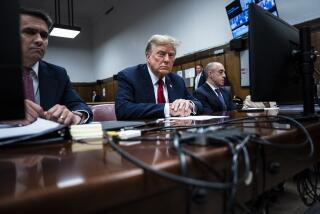Mexico takes different tack on Juarez violence
The rifle-toting Mexican soldiers who patrolled in convoys have been sent to the barracks. Now 5,000 federal police officers are responsible for law and order in Mexico’s deadliest city.
The shift in April from military to civilian police control is part of a broadened Mexican government strategy aimed at curbing street violence that has killed more than 5,000 people in Ciudad Juarez since early 2008.
So far, the results have been mixed. The bodies keep piling up and a fledgling “hearts and minds” campaign has yet to produce convincing gains.
The new approach includes a wide-ranging effort to address the vast social and economic ills that are believed to feed crime and gangs in Juarez. Officials unveiled the retooled effort after a huge outcry over the January slayings of 15 people when drug-gang hit men stormed a teen party in an apparent case of mistaken identity.
Saving Juarez won’t be easy. Months after the new police deployment, the city’s murder rate remains stubbornly high: about seven killings a day, according to unofficial tallies in the news media.
On a recent day, 22 people were slain. Another day, the mayor of a town outside Juarez died in a hail of gunfire at the home he kept in the city. Early this month, assassins ambushed and killed a deputy state prosecutor in her car.
Fear-stricken Juarez residents say the government has replaced one heavily armed federal force with another, so far without solving their biggest worry: the lack of security.
“It’s a very ugly environment, very tense,” said Maria Elena Perez, a 63-year-old resident interviewed at a shopping center that has its own private security force and offers unofficial haven from the daily violence. “They promised a lot of things. We haven’t seen any changes.”
Officials say they’re on the right track in trying to mend the “social fabric” of the scruffy border city through a $260-million effort called Todos Somos Juarez, or “We Are All Juarez.”
The project is in response to frequent criticisms that President Felipe Calderon’s crackdown on drug cartels, begun in December 2006, has relied too much on firepower and given short shrift to addressing the kinds of problems that can steer young people to crime: deep poverty, inadequate schools and child care, and a lack of jobs and recreation.
Juarez, with 1.3 million residents, has for more than two years been the scene of a bloody turf battle between potent drug-trafficking organizations and related feuding among homegrown street gangs.
The wave of violence, which has included beheadings and bodies strung up in public, struck at the same time that the economic tailspin closed scores of businesses, slashed output in Juarez’s assembly plants and torpedoed 1 in 4 formal jobs.
“A lot of crises came together during the same period,” said Manuel Sotelo, a trucking company executive who presides over a group representing 10 business associations.
The Mexican government now hopes to win back ground by augmenting crime fighting with jobs programs and construction of parks, schools and hospitals.
“It’s not enough to analyze it only in terms of public safety. You have serious gaps in the social and economic [areas] that have to be closed,” said Antonio Vivanco, a Calderon advisor overseeing the development effort.
In the first months, the program has paid to have more than 750 police cruisers outfitted with GPS technology so commanders can track them, a check against official corruption. Authorities have assigned extra police to key thoroughfares to create nine “safe corridors,” envisioned as crime-free zones.
More than 5,000 residents have received job-training grants or temporary work sprucing up parks and sidewalks and planting trees. Officials added thousands of families to a government insurance program and handed out 6,000 scholarships in a city where few students were receiving such help.
Some skeptics wondered whether the outlay was aimed mainly at winning support for Calderon’s conservative National Action Party before elections held July 4 in the state of Chihuahua, where Ciudad Juarez is located. If so, it didn’t work: The president’s party lost.
Human rights advocates say the switch to federal police has given the officers a more receptive audience than the army had, but residents complain that the police have shown signs of heavy-handedness too.
Gustavo de la Rosa, the state’s human rights ombudsman in Juarez, said he sees little change in the basics of the drug war strategy here. De la Rosa said the Calderon government appears content to let the two warring drug cartels — from Juarez and the northwestern state of Sinaloa — slaughter each other. But this also results in civilian casualties and creates a climate of terror.
“They changed the actors, but the play is the same,” he said.
Even for residents who applaud the nascent push to build libraries, schools and playgrounds, the daily violence trumps all.
“Although the government is making a great effort to recover cultural and educational spaces in Juarez, the problems of insecurity haven’t gone down,” one resident wrote in a chat session on the Todos Somos Juarez website.
Vivanco said it was frustrating that the bloodshed garners the most attention. But it’s hard to find a corner of the city left untouched by the violence.
Sandra Reyes, a 33-year-old sidewalk vendor, said one of her neighbors was slain a few weeks earlier in an apparent gang-related revenge killing for something his brother had done. As for anti-drug strategies, Reyes shrugged.
“I live my life with my family and forget about the rest,” she said.
More to Read
Start your day right
Sign up for Essential California for news, features and recommendations from the L.A. Times and beyond in your inbox six days a week.
You may occasionally receive promotional content from the Los Angeles Times.






